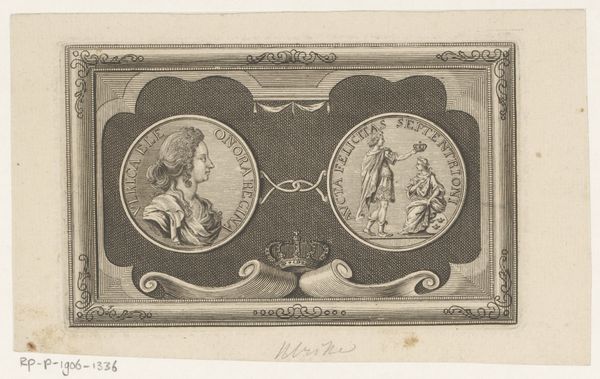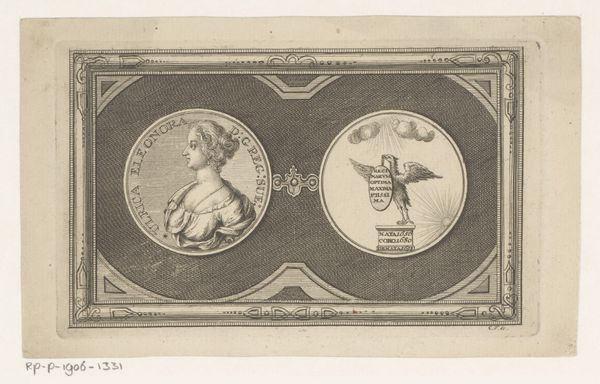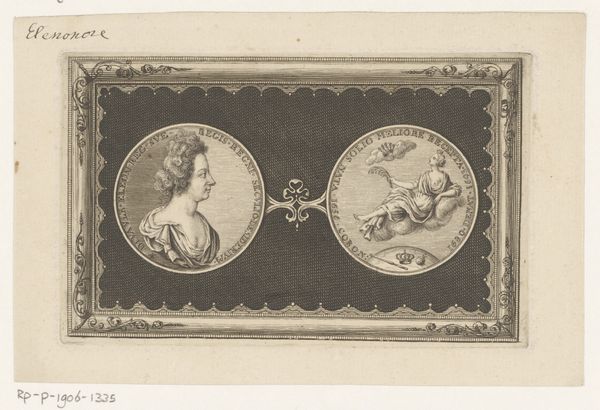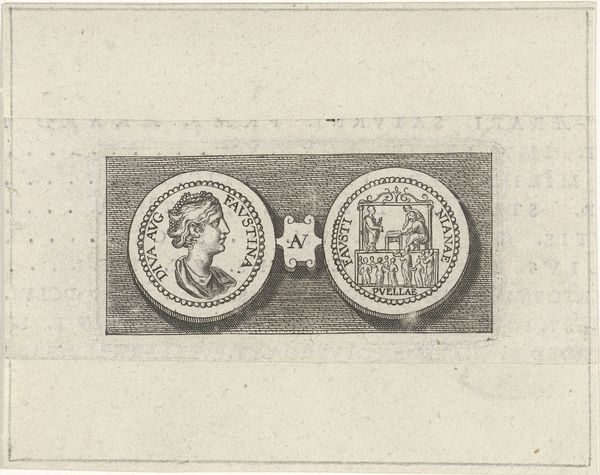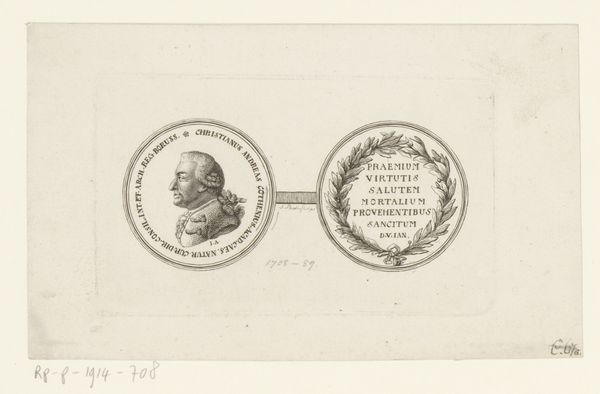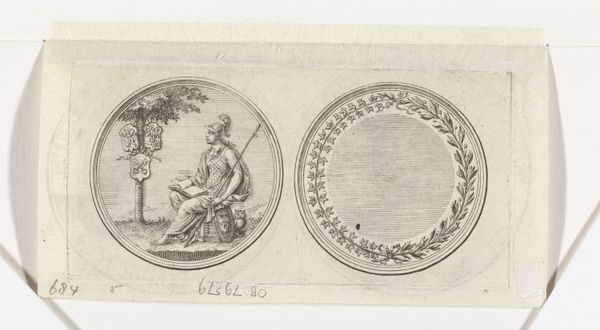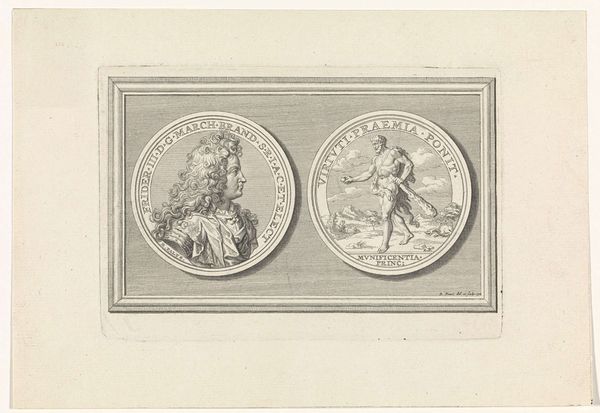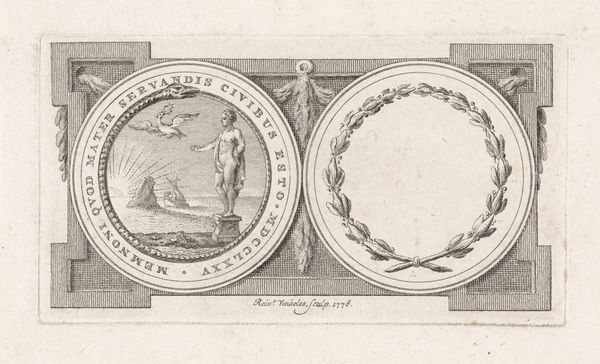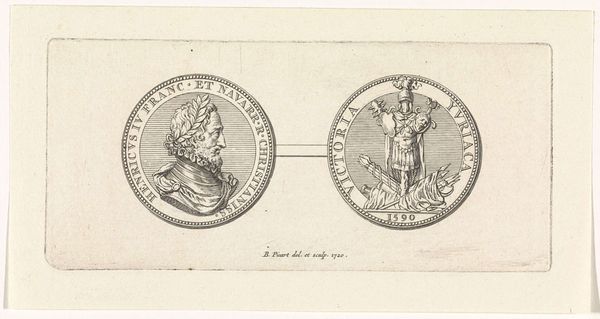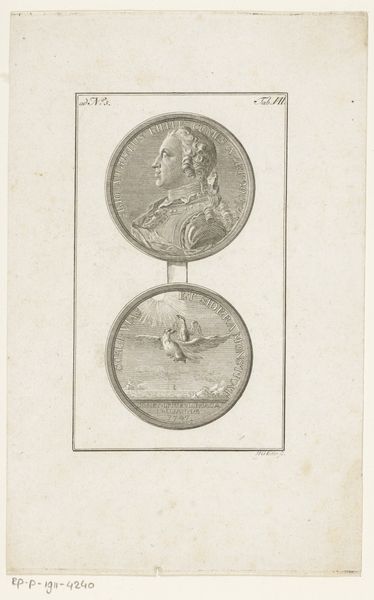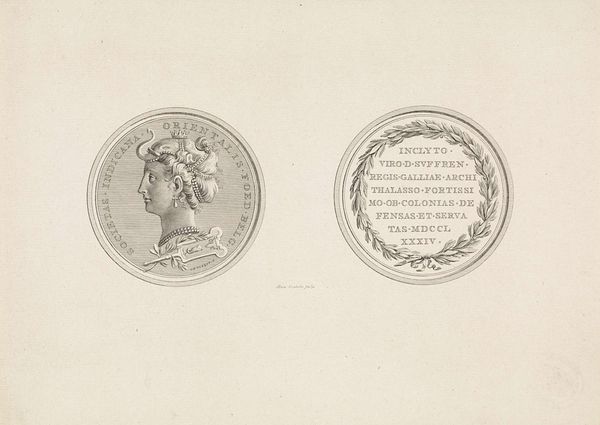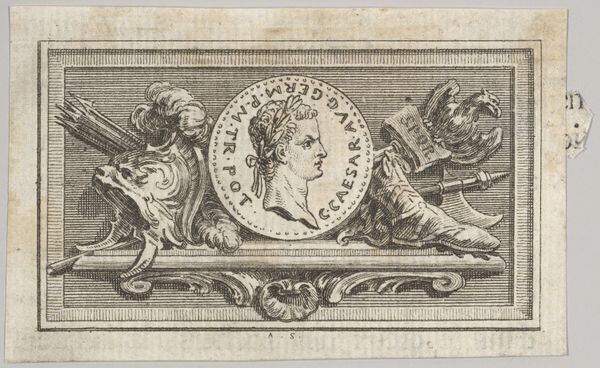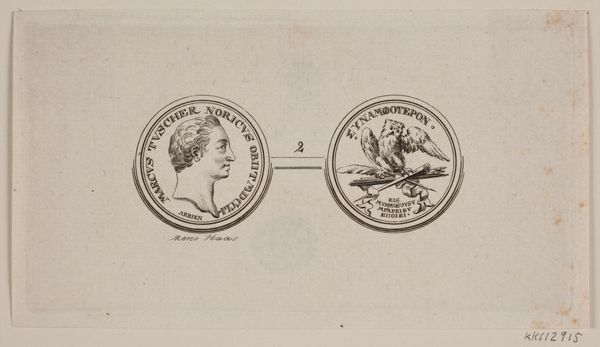
Medaille met het portret van Ulrika Eleonora en tegenzijde 1705 - 1769
0:00
0:00
christianfritzsch
Rijksmuseum
print, engraving
#
portrait
#
baroque
# print
#
history-painting
#
engraving
Dimensions: height 65 mm, width 118 mm
Copyright: Rijks Museum: Open Domain
Curator: Here we have an engraving dating from between 1705 and 1769, entitled "Medaille met het portret van Ulrika Eleonora en tegenzijde" attributed to Christian Fritzsch, currently residing in the Rijksmuseum's collection. Editor: It feels rather… rigid. The stark black and white contrast accentuates the subject’s unflinching gaze, yet I’m also drawn to the almost handcrafted feel in the way the textures of the engraving appear. Curator: Yes, that contrast is achieved through meticulous line work. Notice the framing device—two circles interconnected within a rectangle. The portrait displays the subject, while the image on the right appears symbolic. We can decode them as semiotic markers, with Ulrika's representation being closely tied to the notion of the Divine Right of Kings. Editor: Which raises a question about labor and access: engravings such as these helped disseminate such imagery beyond painted portraits to the masses; while remaining a laborious process in terms of skilled craftsmanship. Who were these engravings for, and what was their life as ephemera once produced? Curator: A fascinating point! Consider how the clean lines of the portrait on the left contrast sharply with the somewhat denser composition on the right, complete with cherubic figures, a female holding what looks like a sword and a royal person, suggesting an allegory to love and royal virtue. Editor: Thinking of this engraving, it also highlights the social context that the work speaks of. The print serves less as art and more as a record, where dissemination of portraiture acts almost as propagandist. I almost wonder what an ‘original’ version looked like in the engraver’s hand. Curator: Certainly! Each component of the print – the crown, the symbols, Ulrika’s pose – carries significance that ties it inextricably to concepts of power, status, and her individual importance as a historical figure, within the language of Baroque sensibilities. Editor: Exactly. The artist and artisan’s engagement with print and propaganda demonstrates the convergence between the hand and politics, creating a rather interesting tension between their physical actions of production, against the visual work disseminating the idea of monarchal power. Curator: I’ll look at it with a bit more detail and with that intersection of making as a lens in mind. It opens up a far broader discussion of her historical and political influence. Editor: Indeed, recognizing these convergences allows us to contemplate how artistic labour not only makes visual artwork, but also produces and shares ideologies.
Comments
No comments
Be the first to comment and join the conversation on the ultimate creative platform.
